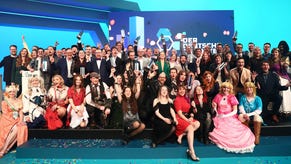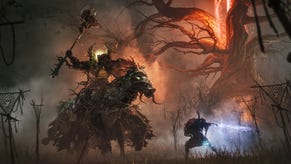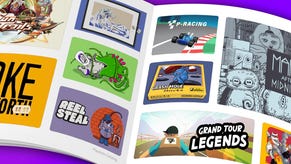Google opening Lively to game developers
AUSTIN GDC: Hanna reveals plans for integration of games - from arcade to entire 3D titles - in Google's growing virtual world
It was a surprisingly lightly attended session that initiated Austin GDC's WorldsInMotion virtual worlds focused conference track - surprising because you'd imagine that the entrance of a company with the massive resources and cultural ubiquity as only Google has would be just the sort of disruption that would threaten to set the industry on end.
While product manager Mel Guymon wasn't able to make his scheduled speech, creative director Kevin Hanna gave no less a revealing look into the future of Lively, Google's recently debuted web-embeddable 3D virtual world.
Formerly an Xbox developer at Microsoft and a Disney Interactive art director, Hanna is creative VP of X-Ray Kid Studios, a "content spinoff" of Google responsible for both creating the project's distinctively "soft but edgy" look, as Hanna described it, and for continuing to create further enhancements and customisations to its characters and rooms.
Most importantly, Hanna quietly announced that while you can currently embed any Google Gadget into Lively's world – such as YouTube videos or weather reports running on virtual TVs - the company will soon be providing an API for developers to create new interactive gadgets to run in the space.
"Imagine a scenario with a virtual arcade," explained Hanna, where users can stand over the shoulder of other Lively users and watch them play games, something he said hearkened back to that "old arcade ideology" and atmosphere.
And, taking that idea to its logical conclusion, Hanna said that the Lively team also had on its roadmap opening the API further to create entire 3D games entirely through Lively, to use, he said, "the economy that we've set up... and build own games on top of that - it opens up a world of possibilities" from his 11 year old daughter creating content to a startup building their "dream game" - not one based on what a publisher dictates.
Hanna said developers are already being allowed to join its program to create Lively content - most recently a group of 120 - and that plugins were on the way for 3ds Max, Maya, and Google's own SketchUp 3D tool for both modelling and animation.
"This is just one more bullet in the gun - more ammunition for Google," Hanna explained of Google's desire to enter the virtual world space, part of its philosophy of "empowering the user and deepening the experience... One more way of selling a bigger picture and philosophy of Google."
In keeping with that philosophy, and one of the pressing questions from the audience, Hanna said that officially Google has no intention of setting up a system of its own monetization or microtransactions - there will likely never be "Google Bucks" to buy - but it is putting in place a system for peer to peer transactions so developers can sell their own content and creations.
Over the long term, Hanna said that while he couldn't speak for Google's official stance, his hope is that Lively becomes "invisible" as much as Flash, Java or HTML are as the backbone of the web experience, that it becomes a "core architecture."
"Google has already been in 3D world space, if you think of like Google Earth - a tool a lot of us use every day," he concluded. "Google in 3D space and online space is here to stay as much as any online company."







